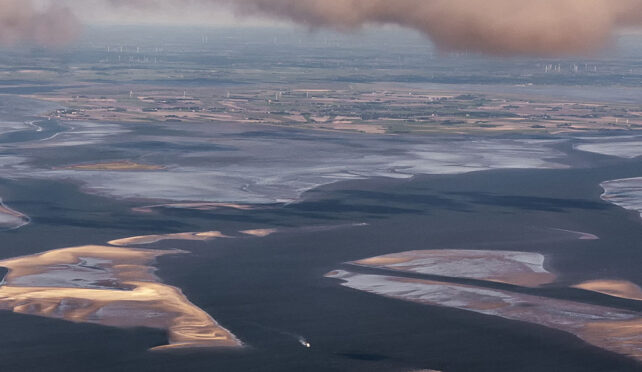Archaeologists have mapped out the lost city of Rungholt for the first time.
Legend has it that the once thriving city, which now sits off the coast of northern Germany, was swallowed by the North Sea in a single night following a heavy storm as punishment for its inhabitants' sins.
According to folklore, these sins included things such as drunkenness, impiety, and the flaunting of wealth, according to The Times.
So the stories go, the life of abundance led to an immoral life, and the end came around Christmas when a gang of young drunkards tried to force a priest to give a pig the last sacrament at a local inn.
The cleric went to the church and prayed and asked God to punish the young men. He left town the next day, and shortly after, the great storm hit that wiped Rungholt off the face of the Earth.
In medieval legends, the sound of its bell tower could be heard from the depths of the North Sea.
While some historians questioned whether the town ever existed outside myth, new research has uncovered the remains of this "northern Atlantis" in the Wadden Sea, per the report.

Archaeologists from Christian-Albrecht University in Kiel found approximately 1.2 miles (1.9 kilometers) of medieval mounds around an island now known as Südfall after mapping the site with a geophysical survey.
"Settlement remains hidden under the mudflats are first localized and mapped over a wide area using various geophysical methods such as magnetic gradiometry, electromagnetic induction, and seismics," Dennis Wilken, a geophysicist at Kiel University, says of the research in a press release.
The new findings included a harbor, the foundations of a large church, and drainage systems, according to new research.
The press release says that investigations into the tidal flats continued to "bring to light significant new finds" and provided unparalleled insights into the lives of the North Frisian people.
But the researchers are working against the clock, as the conditions continually eat away at the remains.
"The medieval settlement remains are already heavily eroded and often only detectable as negative imprints," Hanna Hadler, who works at the Institute of Geography at Mainz University, says.
"So we urgently need to intensify research," she adds.
This article was originally published by Business Insider.
More from Business Insider: